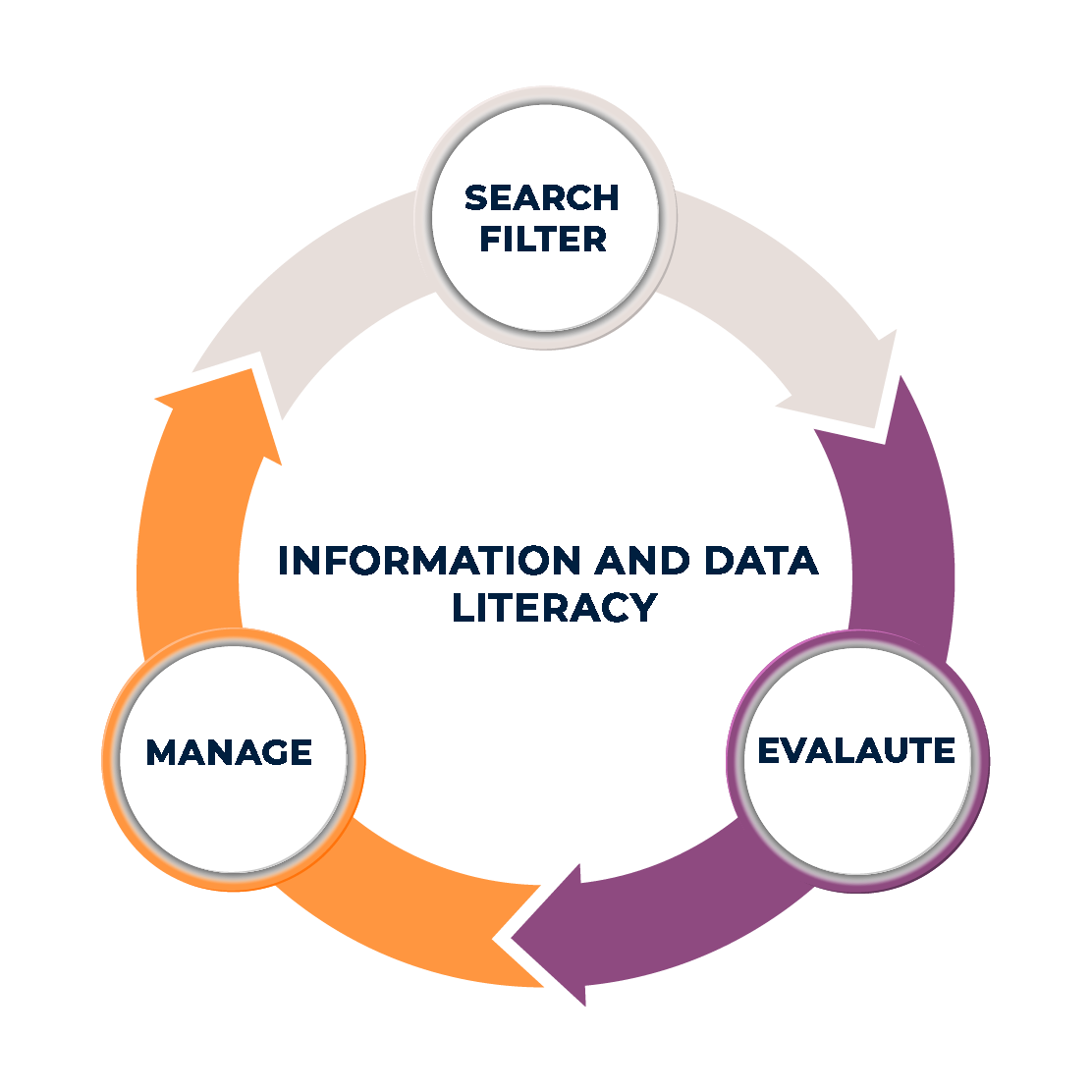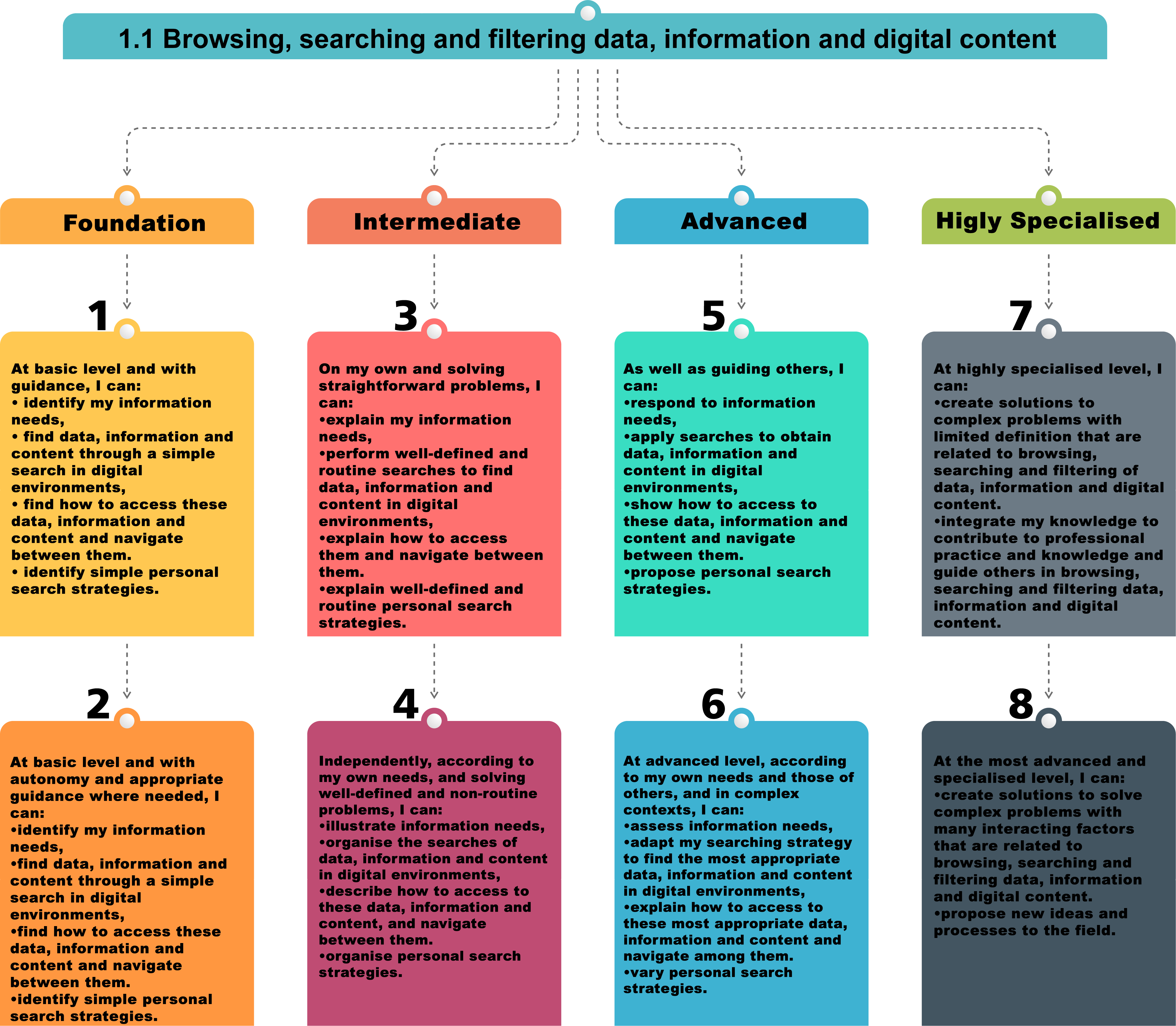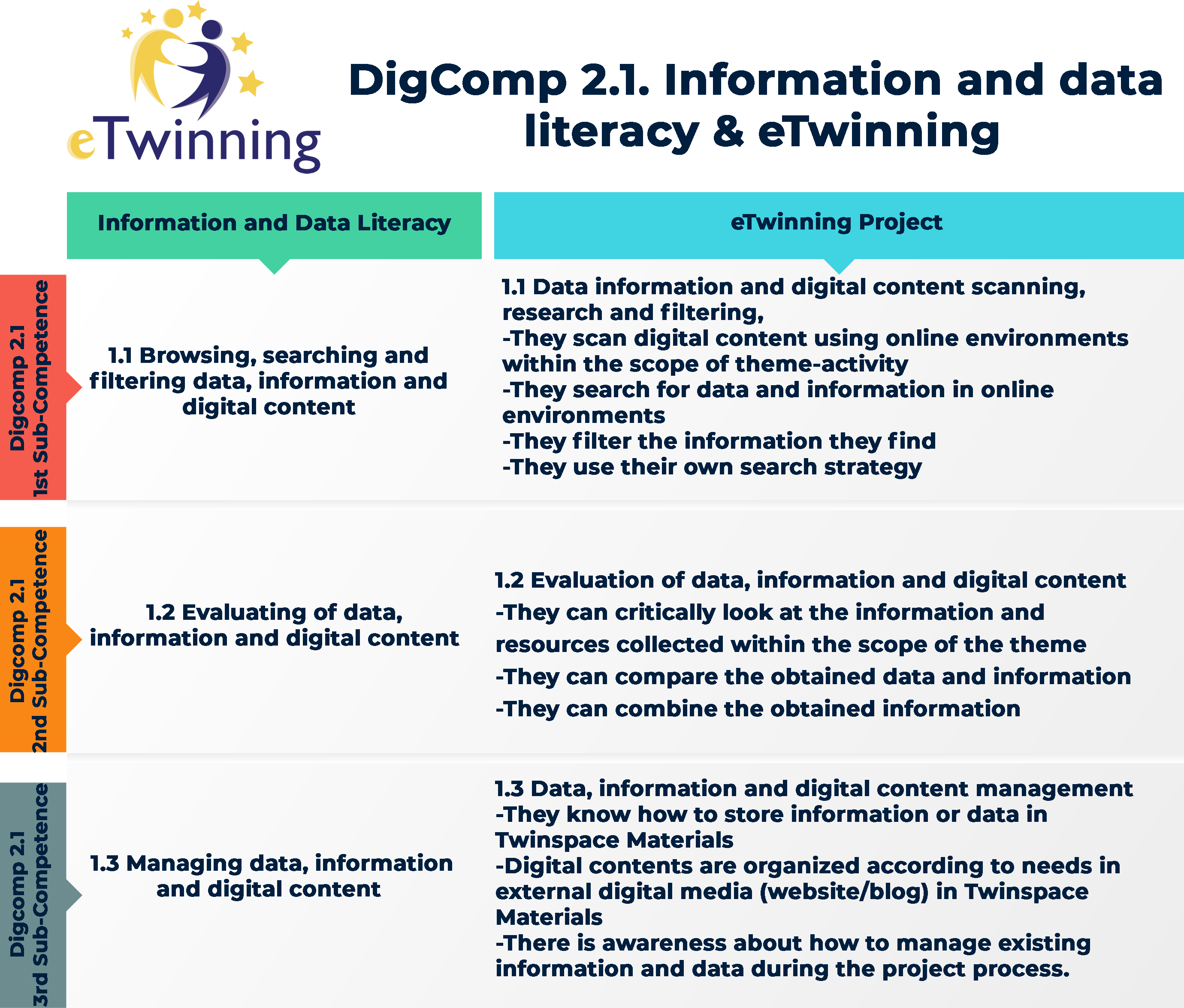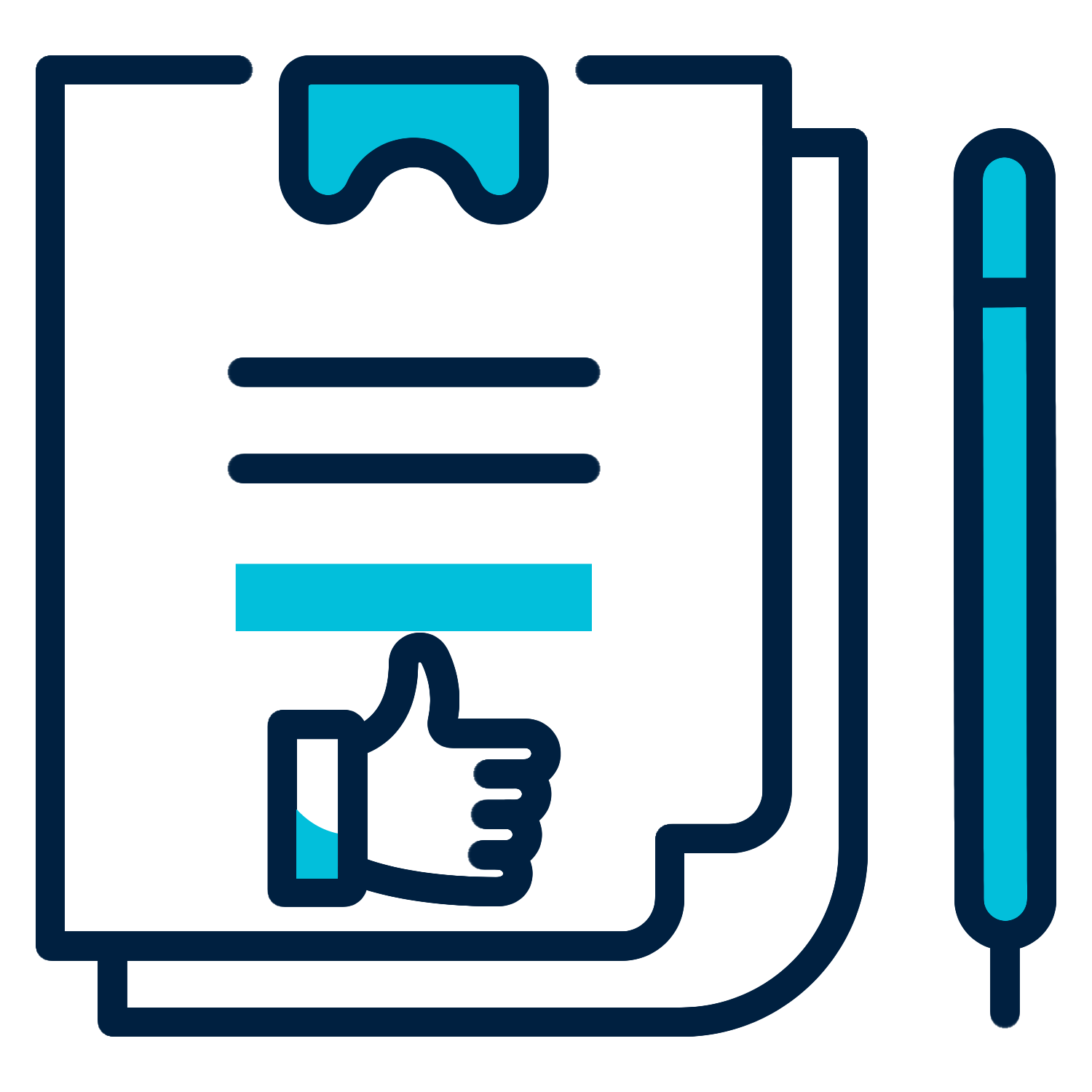Module 2:Information and Data Literacy
 Literacy
Literacy
“The ability to describe, understand, interpret, create, communicate and calculate using printed and written materials relevant to a variety of contexts. Literacy requires a continuity of learning to enable individuals to achieve their goals, develop their knowledge and potential, and participate fully in their own community and society at large.” (UNESCO)
Data Literacy
It is the willingness and ability to attract the attention of society constructively through and with data. (UNESCO)
Please watch the video below on “ Data Literacy”.
Participant Interaction
Please Answer the question via the MentiMenter tool.
We live in a digital world. The phenomenon of digitalization makes its impact felt in all areas of life; It changes the way we do business and our habits. In the digital world, it has become a necessity for individuals to know how to access accurate information, how to process, evaluate and use information in a meaningful way, and how to manage information.
In parallel with the rapid development of digital technologies on a European scale, the European Digital Competence framework (DigComp), which was prepared to better understand the importance of competence in the digital field, to identify and develop the digital competences of citizens, consists of five main digital competence areas. The first of these key competence areas is “Information and Data Literacy”.
“Information and Data Literacy” consists of 3 sub-digital competencies:
1.1 Browsing, searching and filtering data, information and digital content
1.2 Evaluation of data, information and digital content
1.3 Data, information and digital content management
1.1 Scanning, searching and filtering data, information and digital content
Within the scope of this digital competence, citizens can express their information needs, search for data, information and content in digital environments, access and navigate between digital media. In addition, individuals can create and update their own personal search strategies.
1.2 Evaluation of data, information and digital content
Critical evaluation of the information obtained in online environments full of unlimited content is an important part of information and data literacy. In order to access accurate and reliable information, individuals need to approach the obtained information with a critical and skeptical approach in terms of source and content. The resulting digital content should be analyzed, compared and critically interpreted for relevance and reliability.
“Measuring the Quality of Information”
13: Data, information and digital content management
Digital content, documents, audio and text files, images, graphics, animations, videos, etc. refers to content used for different purposes in various formats. Digital content management, on the other hand, describes the organization and storage of existing information and data in different media and ways.Individuals try to obtain information that creates value by processing the structured information.
You can examine how a sub-digital competency is leveled at the Information and Data Literacy competency level from the image.
*DigComp Information and Data Literacy and the Context of eTwinning
Please watch the video of Nancy GKIOTLI on the “Information and Data Literacy” aspect of eTwinning projects.
Εύοσμος- Θεσσαλονίκη, Greece3ο ΓΕΛ ΕΥΟΣΜΟΥ
Thessaloniki/GREECE
Discussion
What work do you do to improve your students’ information and data literacy skills in eTwinning projects? How do you use information and data literacy skills in your eTwinning projects?
Module Task
- Answer the 2-question online quiz we prepared with Flippity and share your Certificate in our Facebook group.
 Click this link to get your certificate
Click this link to get your certificate
- Please do not forget to answer the quiz questions about the Module.
Module Badge













